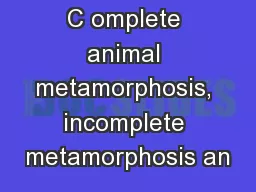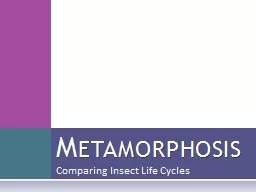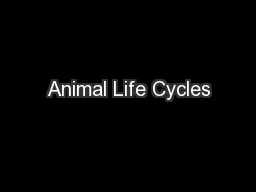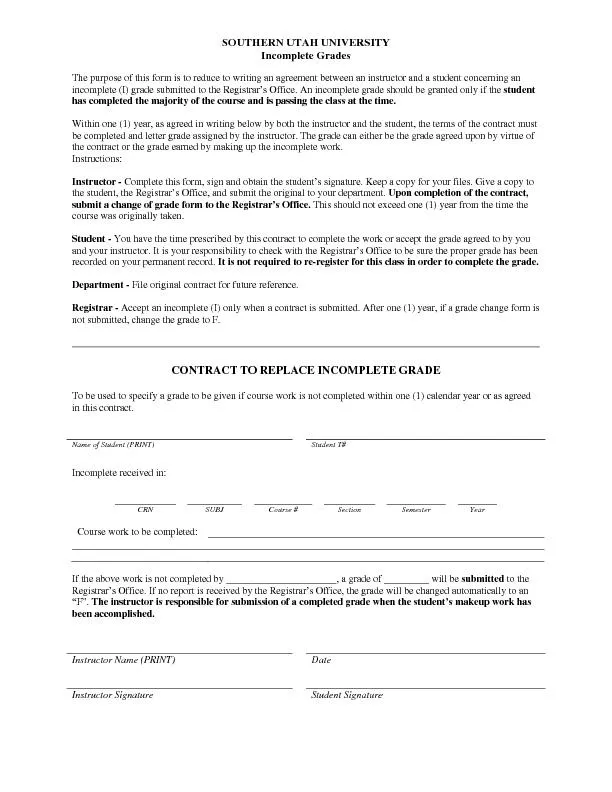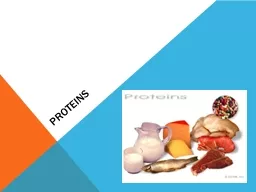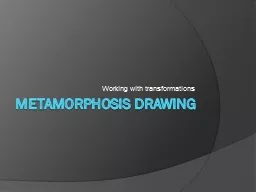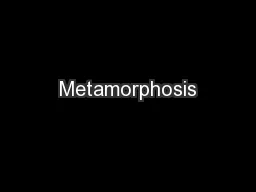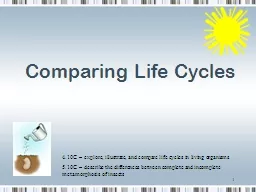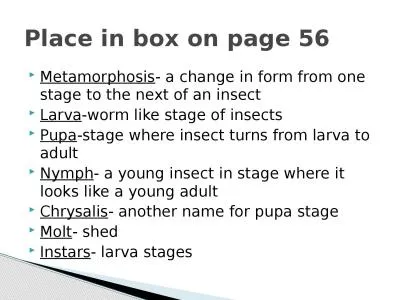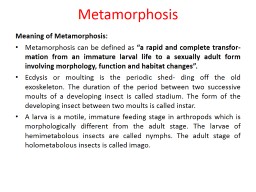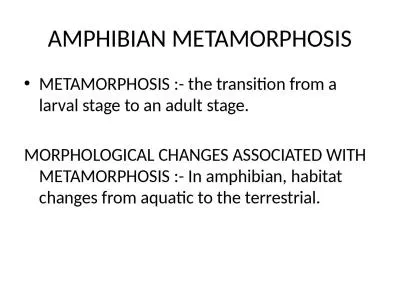PPT-C omplete animal metamorphosis, incomplete metamorphosis an
Author : conchita-marotz | Published Date : 2017-05-17
What is Metamorphosis Metamorphosis is the transformation that occurs in the life cycle of many arthropods from egg through the larval and pupal stages to the
Presentation Embed Code
Download Presentation
Download Presentation The PPT/PDF document "C omplete animal metamorphosis, incomple..." is the property of its rightful owner. Permission is granted to download and print the materials on this website for personal, non-commercial use only, and to display it on your personal computer provided you do not modify the materials and that you retain all copyright notices contained in the materials. By downloading content from our website, you accept the terms of this agreement.
C omplete animal metamorphosis, incomplete metamorphosis an: Transcript
Download Rules Of Document
"C omplete animal metamorphosis, incomplete metamorphosis an"The content belongs to its owner. You may download and print it for personal use, without modification, and keep all copyright notices. By downloading, you agree to these terms.
Related Documents

